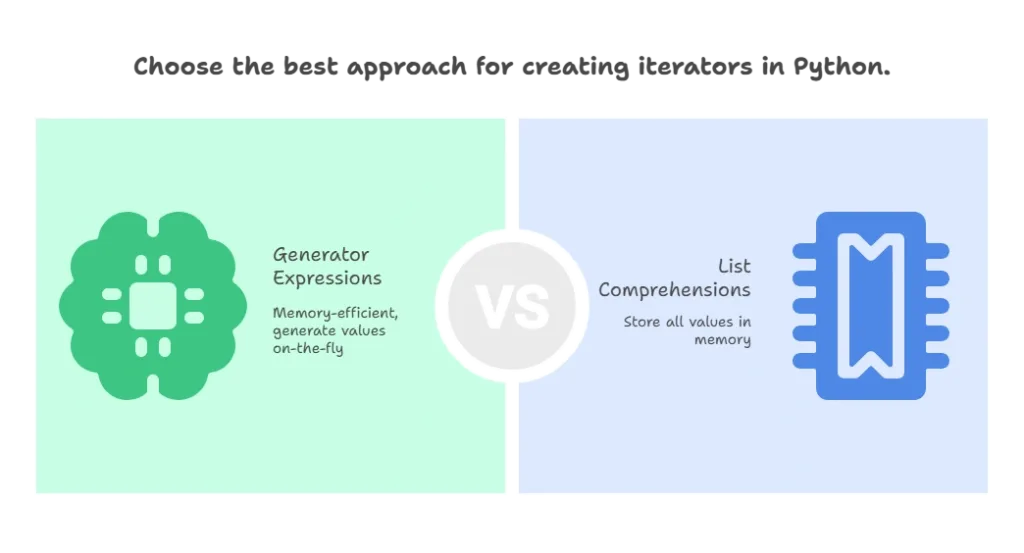Generators Expressions
Generator expressions provide a concise and memory-efficient way to create generator objects without the need for a separate function definition. In this topic, we'll cover everything you need to know about generator expressions, from the basics to more advanced topics.
Basics of Generator Expressions
In this section, we’ll start by understanding the fundamentals of generator expressions and how they work.
Introduction to Generator Expressions
Generator expressions are a compact way to create generator objects in Python. They follow a syntax similar to list comprehensions but produce values lazily.
Creating Generator Expressions
Generator expressions are enclosed in parentheses () and consist of an expression followed by a for clause. They can also include an optional if clause for filtering values.
# Generator expression to generate squares of numbers
gen = (x ** 2 for x in range(5))
# Retrieve values from the generator
for num in gen:
print(num)
Output:
0
1
4
9
16
Explanation:
- In this example, we create a generator expression that yields the squares of numbers from 0 to 4. We iterate over the generator to retrieve the values lazily.

Working with Generator Expressions
Generator expressions offer several advantages, including efficient memory usage and support for lazy evaluation. They are particularly useful for generating large datasets or filtering elements from existing sequences.
# Generator expression to filter even numbers
even_numbers = (x for x in range(10) if x % 2 == 0)
# Retrieve values from the generator
for num in even_numbers:
print(num)
Output:
0
2
4
6
8
Explanation:
- In this example, we create a generator expression that yields only the even numbers from 0 to 9. We iterate over the generator to retrieve the filtered values.
Advanced Concepts in Generator Expressions
In this section, we’ll delve deeper into advanced concepts related to generator expressions, including nesting and using them with built-in functions.
Nesting Generator Expressions
Generator expressions can be nested within each other to create more complex expressions.
# Nested generator expressions to generate Cartesian product
cartesian_product = ((x, y) for x in range(3) for y in range(2))
# Retrieve values from the generator
for pair in cartesian_product:
print(pair)
Output:
(0, 0)
(0, 1)
(1, 0)
(1, 1)
(2, 0)
(2, 1)
Explanation:
- In this example, we create a nested generator expression to generate the Cartesian product of two ranges. Each pair of values is yielded as a tuple.
Using Generator Expressions with Built-in Functions
Generator expressions can be used in combination with built-in functions like sum(), max(), and min() to perform calculations on the generated values.
# Generator expression to generate squares of numbers
gen = (x ** 2 for x in range(5))
# Calculate sum of squares
sum_of_squares = sum(gen)
print("Sum of squares:", sum_of_squares)
Output:
Sum of squares: 30
Explanation:
- In this example, we create a generator expression to generate the squares of numbers from 0 to 4. We then use the
sum()function to calculate the sum of the squares.
In this comprehensive exploration, we explored the concept of generator expressions in Python, from the basics to more advanced topics. We learned that generator expressions provide a concise and memory-efficient way to create generator objects on-the-fly. They are particularly useful for generating large datasets or filtering elements from existing sequences. Happy Coding!❤️
